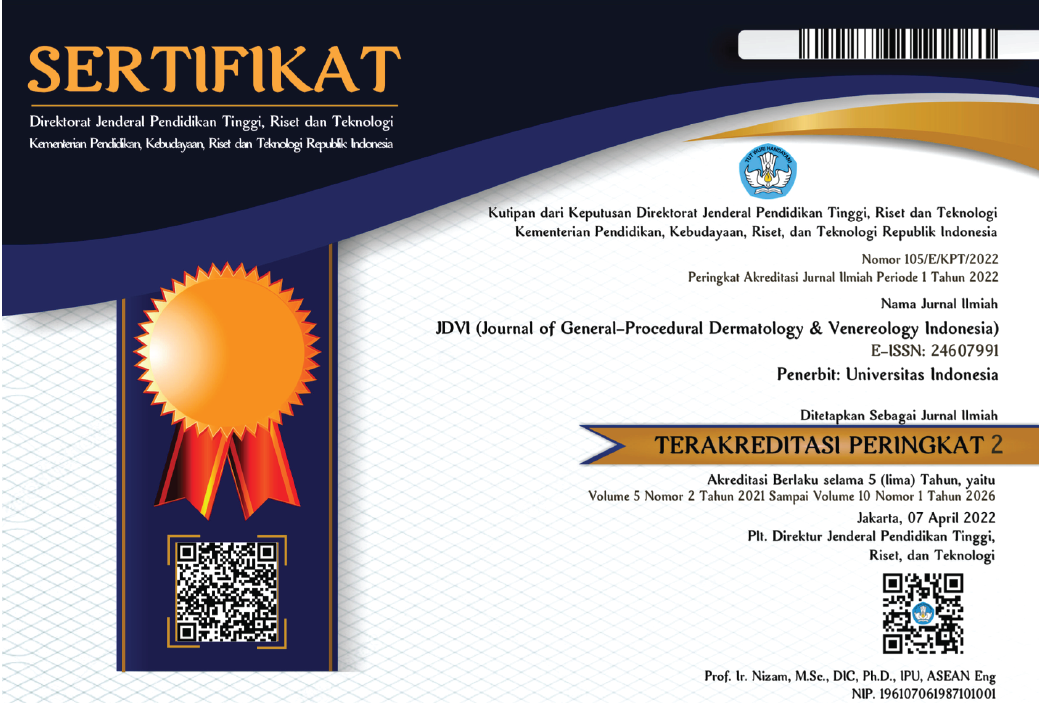Abstract
Occupational skin cancer and precancerous lesions are skin disorders caused by exposure to chemical carcinogens such as polycyclic hydrocarbons and arsenic, or radiation, such as ultraviolet light and ionizing light in the workplace. Annual increase in skin cancer incidence is believed to be related to various factors such as frequent intense sunlight exposure (i.e. at work, recreational activities, and sun-tanning habit), ozone depletion, an increase in number of geriatric population, and an increase of public awareness in skin cancer. The most common occupational skin cancers are basal cell carcinoma, squamous cell carcinoma, and melanoma. Examples of occupational precancerous lesion of the skin are actinic keratosis and Bowen’s disease. Particular diagnostic criteria to diagnose occupational diseases has been developed. Early detection of occupational skin cancer and precancerous lesion is necessary. An effective prevention program consists of primary prevention such as prevention of hazardous material exposure, secondary prevention such as early detection of disease for early intervention, and tertiary prevention such as minimizing long-term impact of the disease.
Recommended Citation
Raissa, Fifinela; Rahmayunita, Githa; Menaldi, Sri Linuwih; and Soemarko, Dewi
(2016)
"Occupational skin cancer and precancerous lesions,"
Journal of General - Procedural Dermatology and Venereology Indonesia: Vol. 1:
Iss.
3, Article 1.
DOI: 10.19100/jdvi.v1i3.29
Available at:
https://scholarhub.ui.ac.id/jdvi/vol1/iss3/1
Included in
Dermatology Commons, Integumentary System Commons, Skin and Connective Tissue Diseases Commons






























